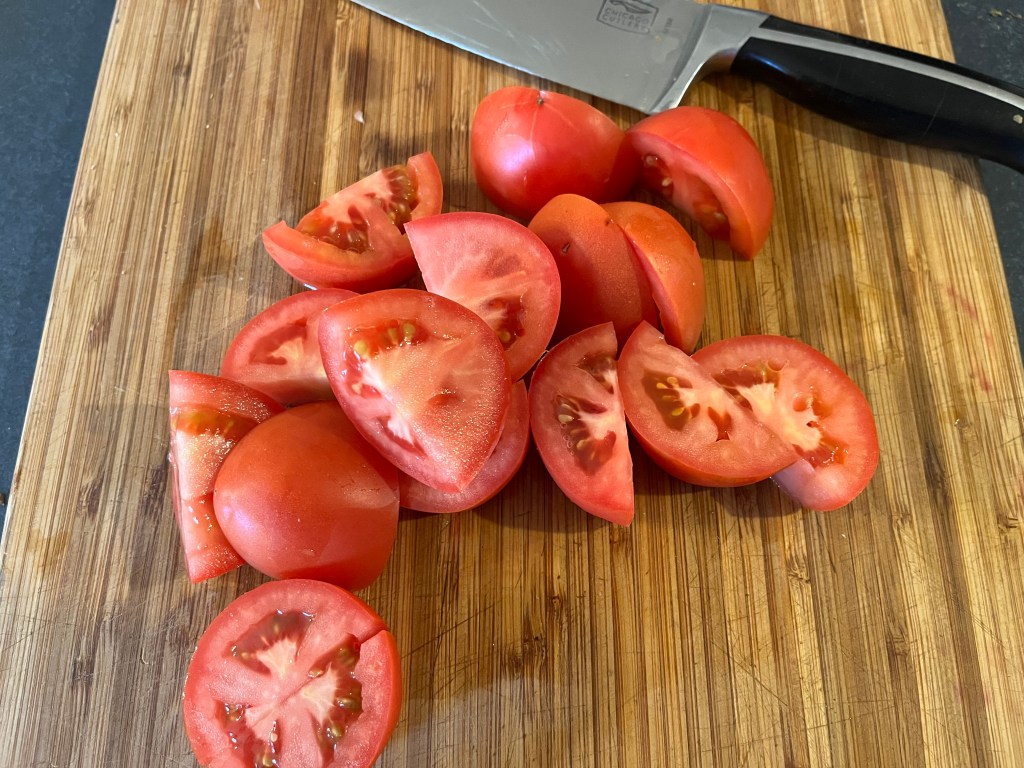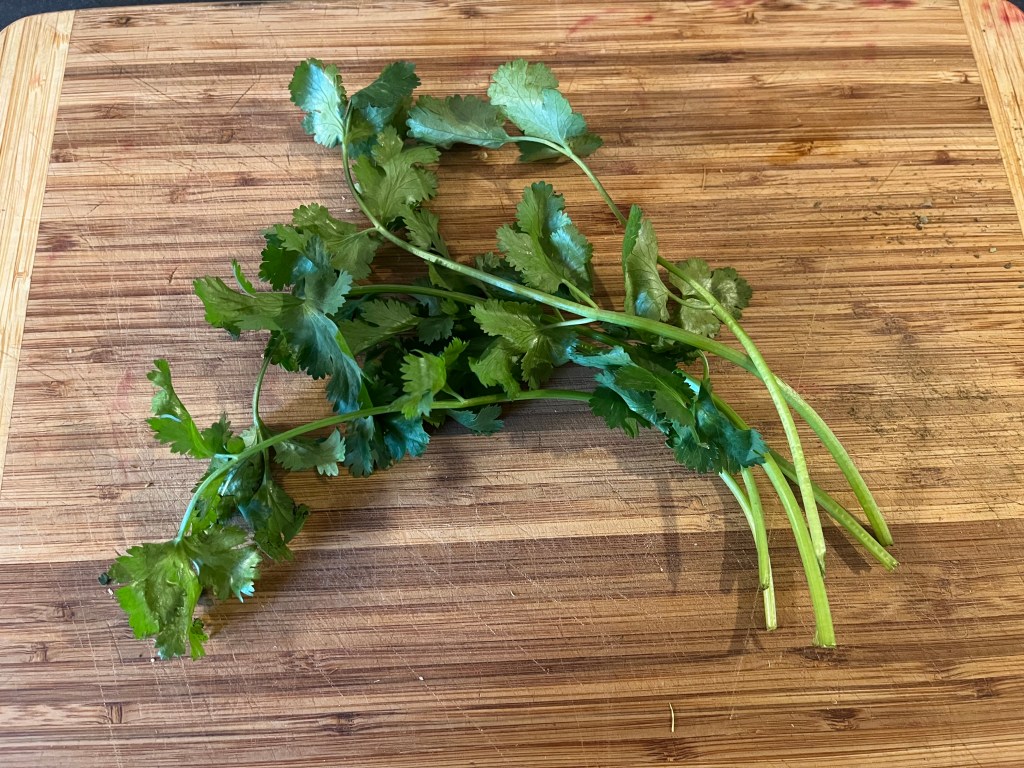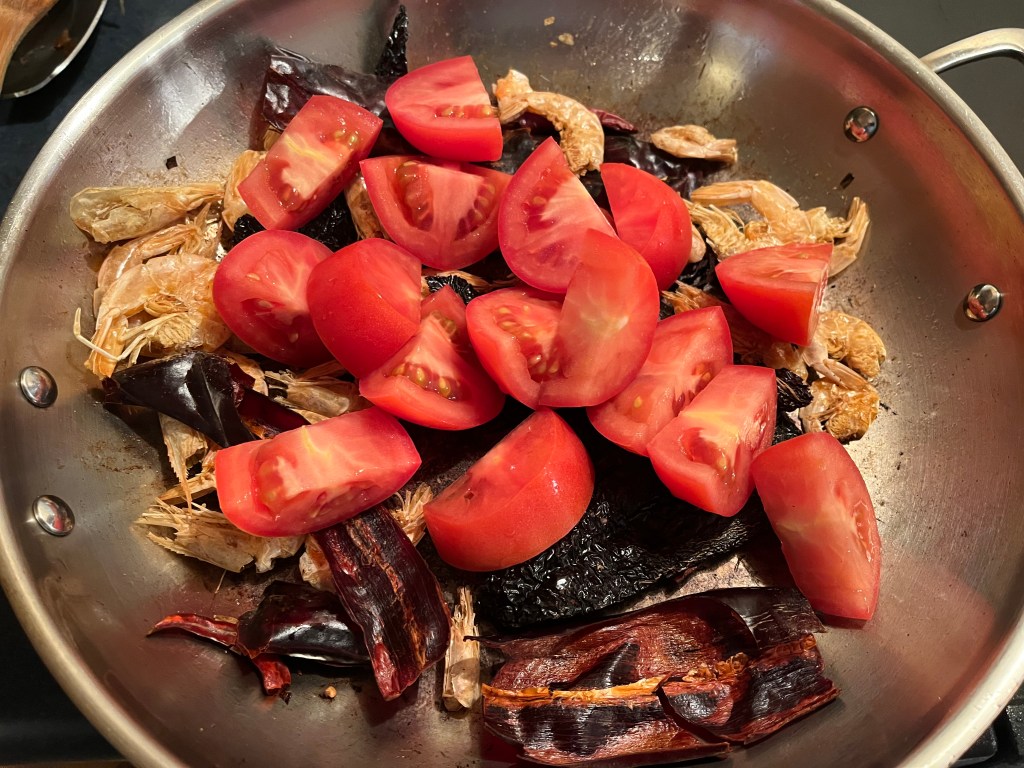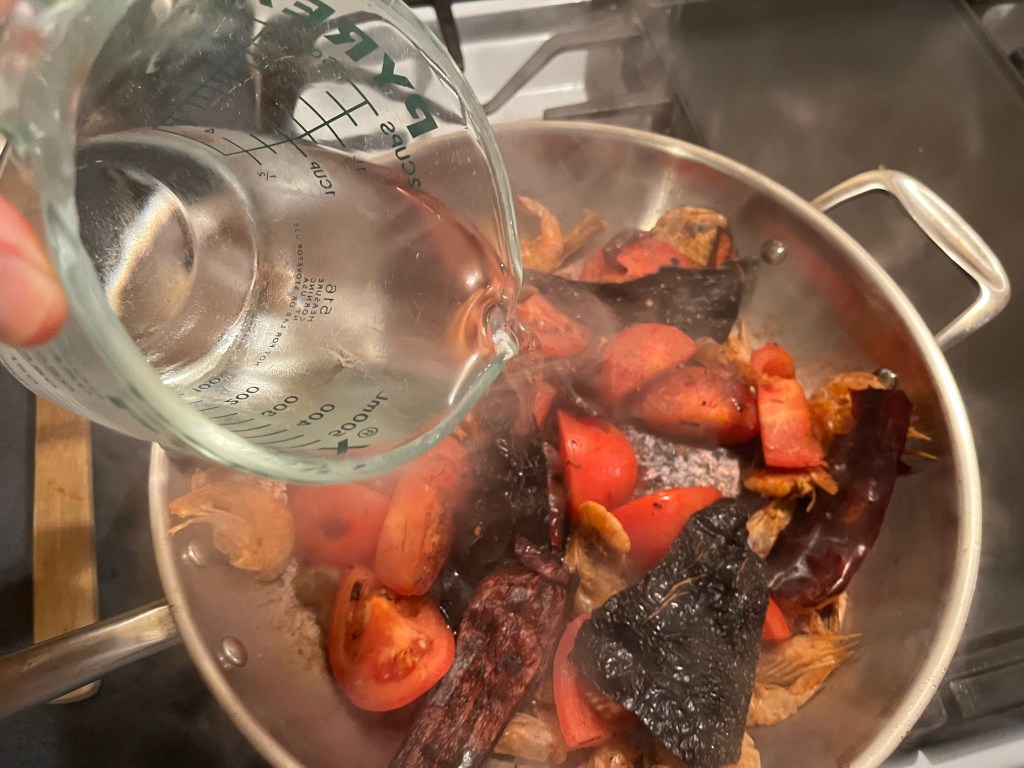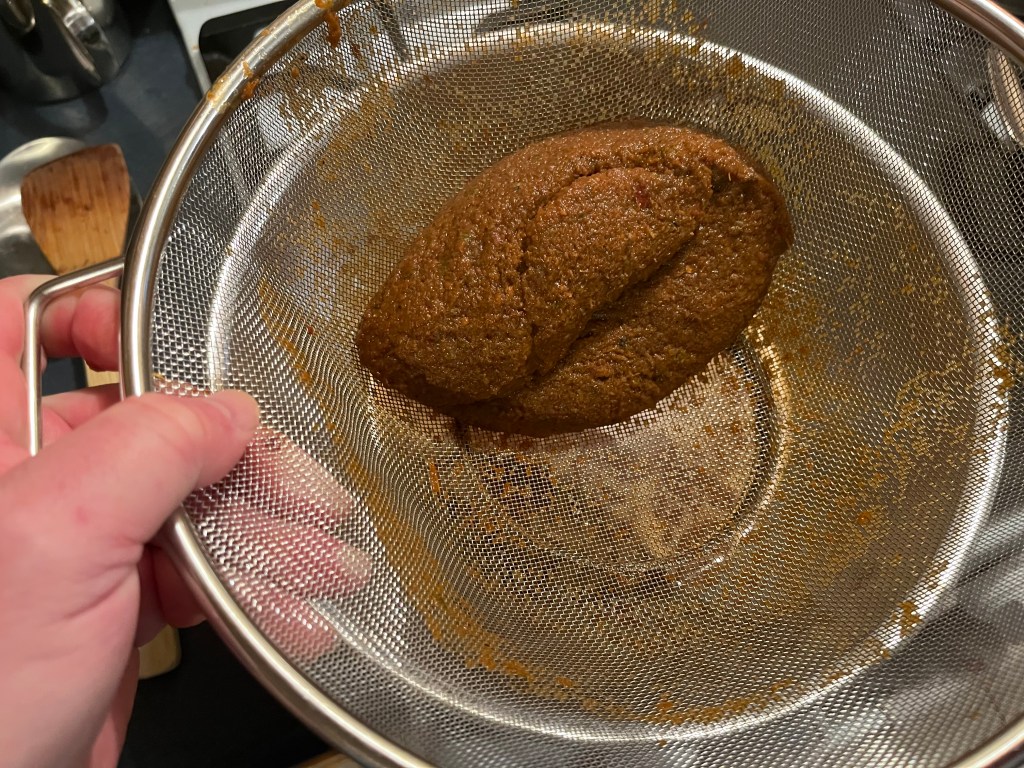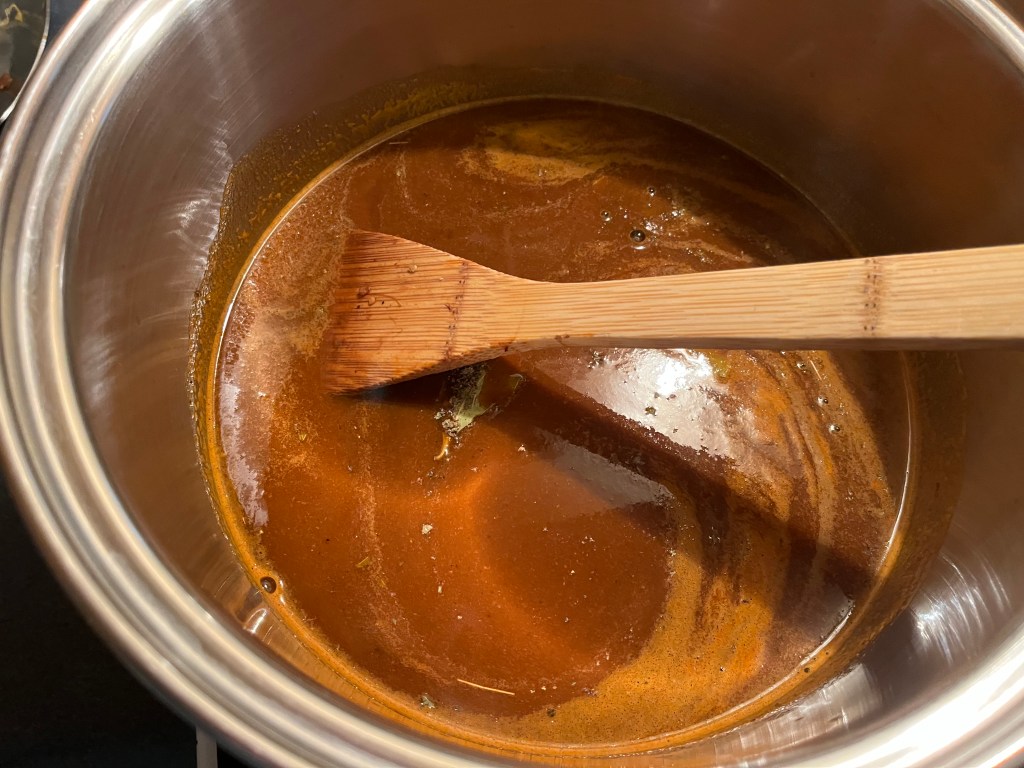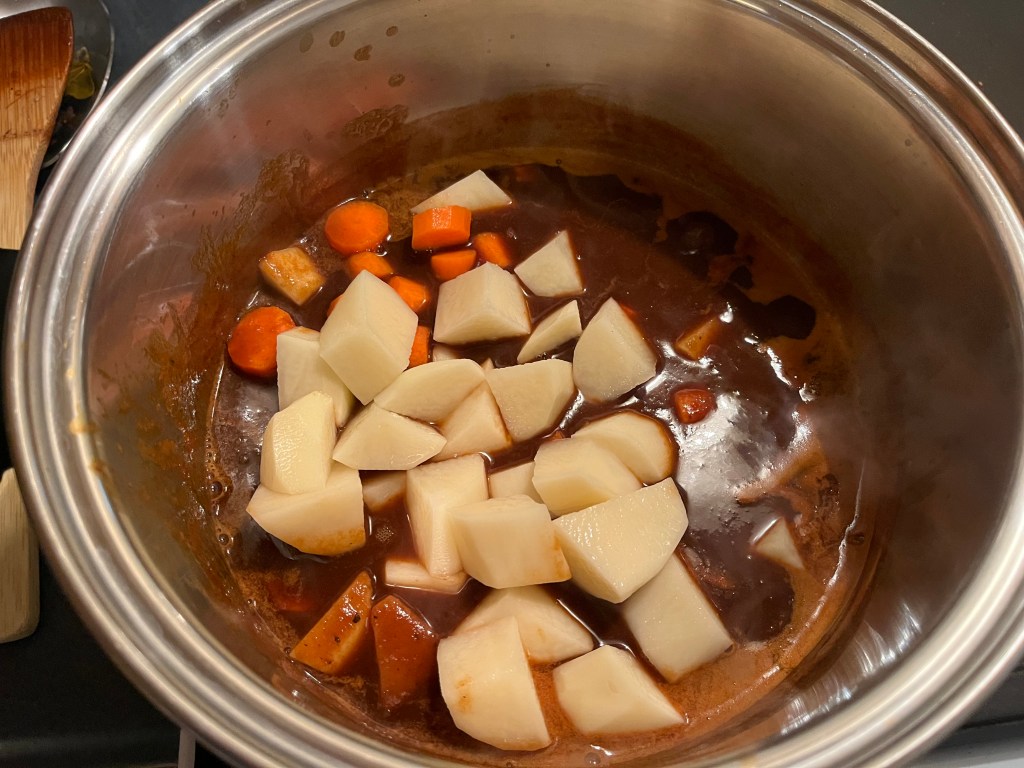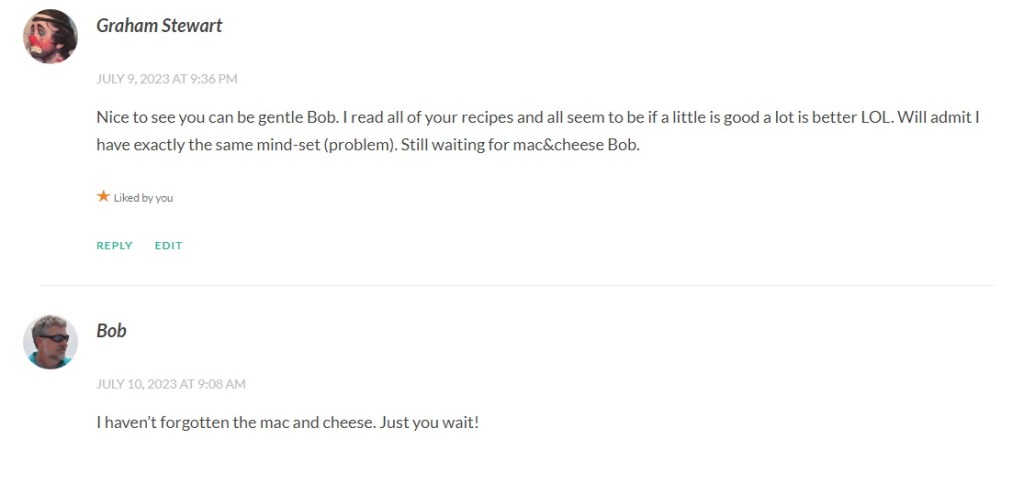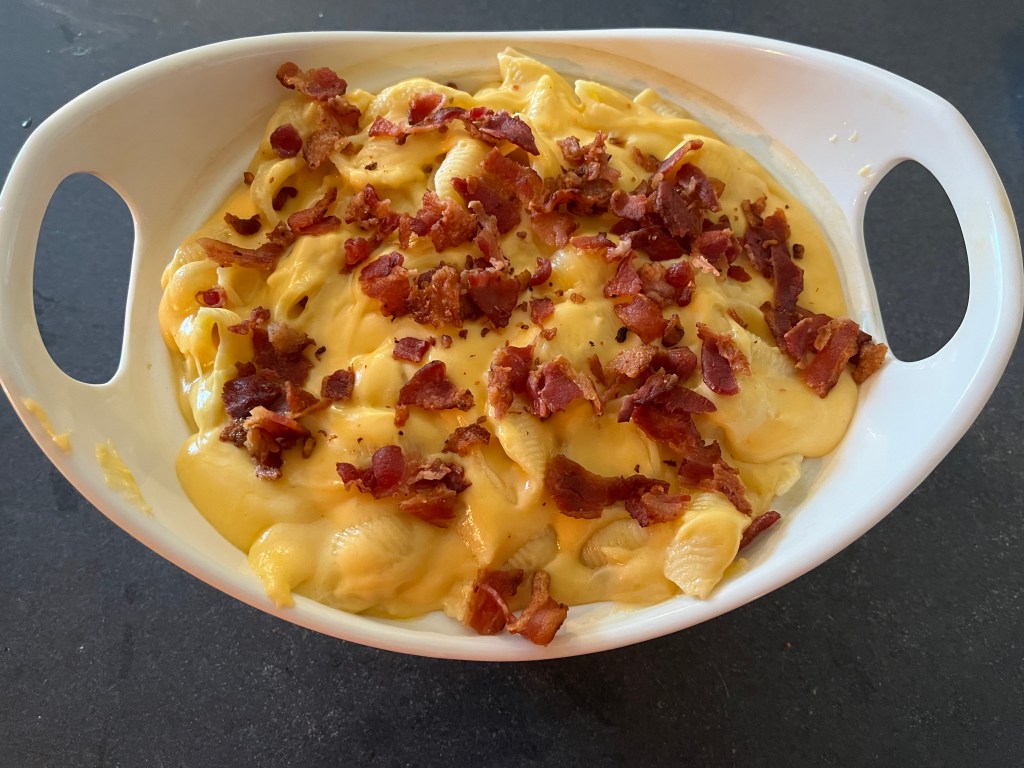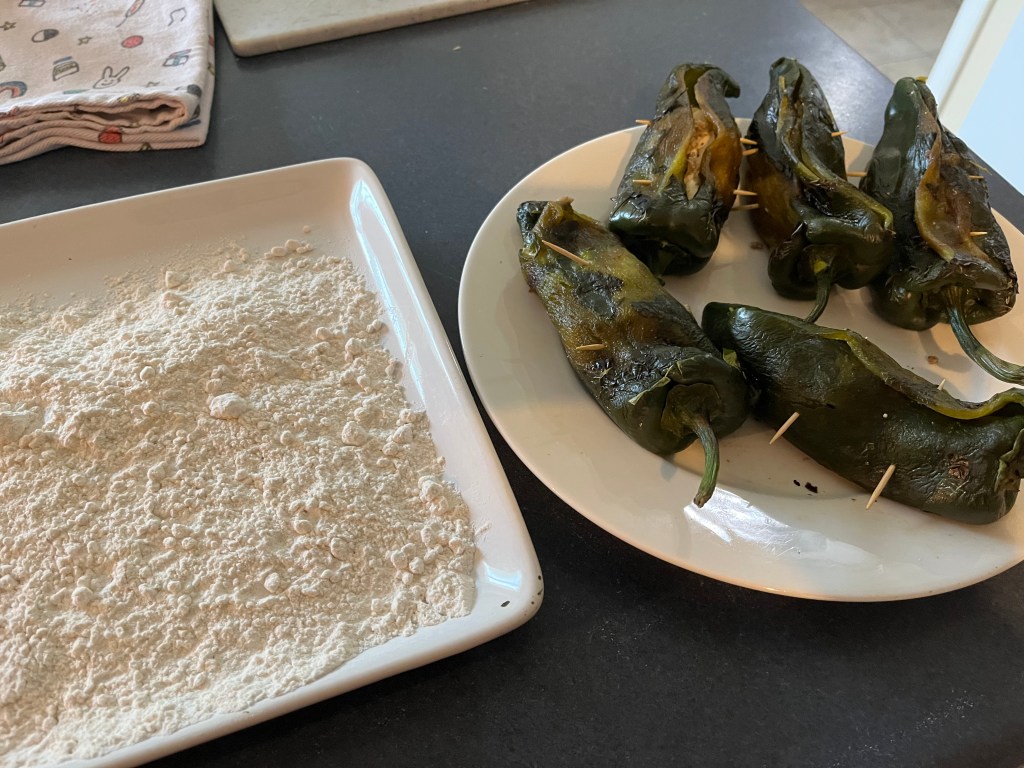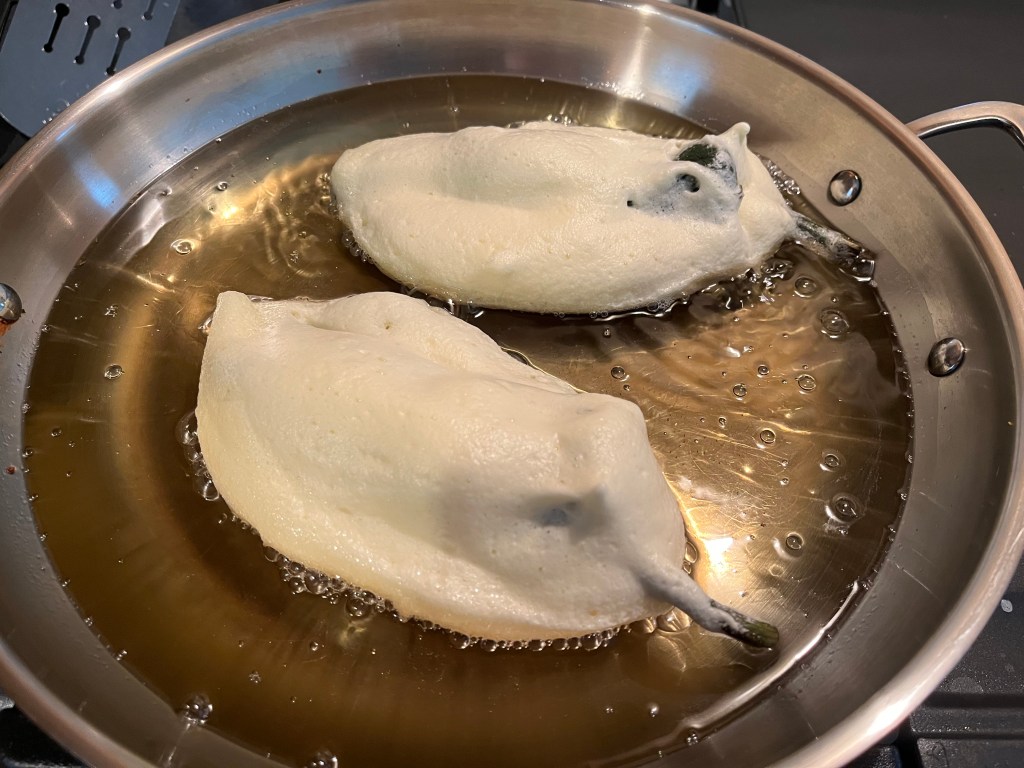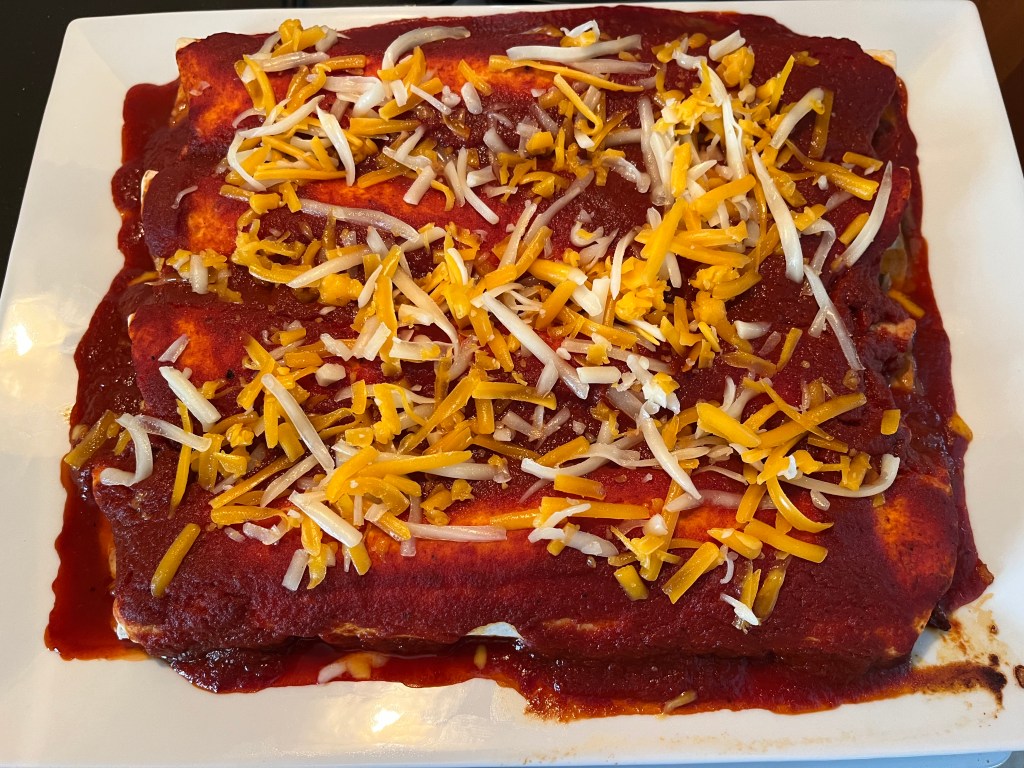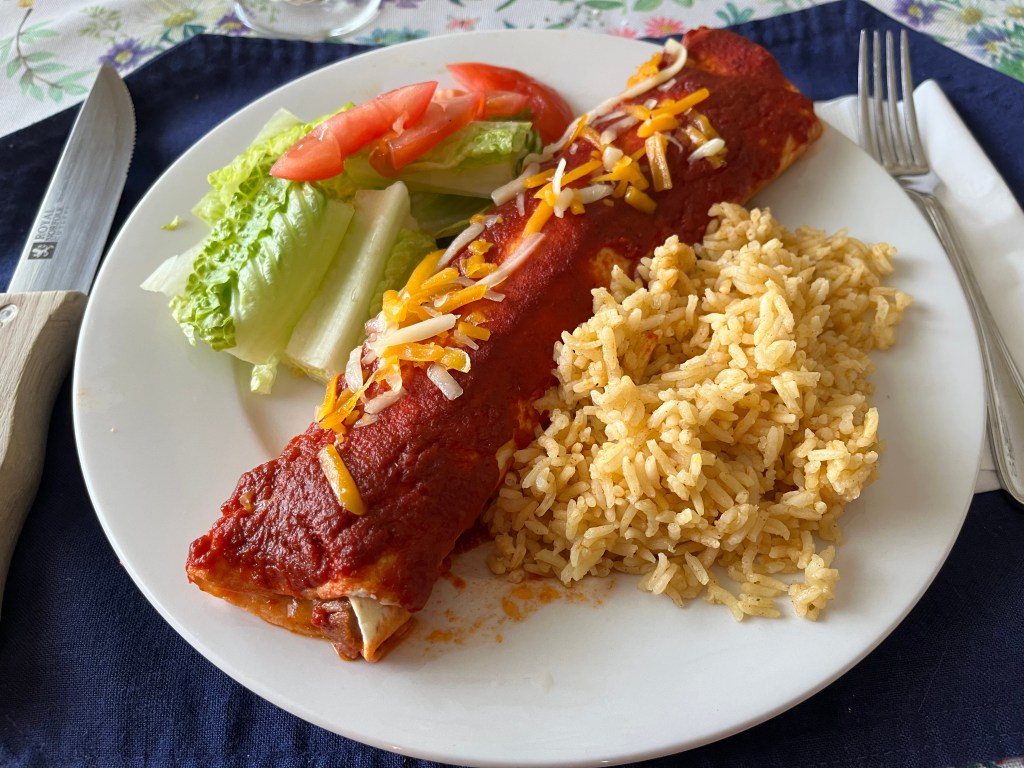This is a Thai inspired recipe, but it’s Americanized for sure! The addition of crispy fried chicken is a dead giveaway. If I had intended to make Pad Krapow Gai (Thai Basil Chicken), I would have used chicken thighs and the chicken would have been chopped into small pieces and pan fried, along with onion, garlic, and chilies. I also used Vietnamese flat wheat noodles instead of white rice.
Anyone who knows me knows that I blend food cultures to suit my taste and this example is no exception. I relied on estimating the volume of ingredients, rather than using precise measurements.
Okay, let’s build a dinner…
Preparation is key. Once the wok is hot, you want to have everything ready. Chop and slice everything in advance and set aside.
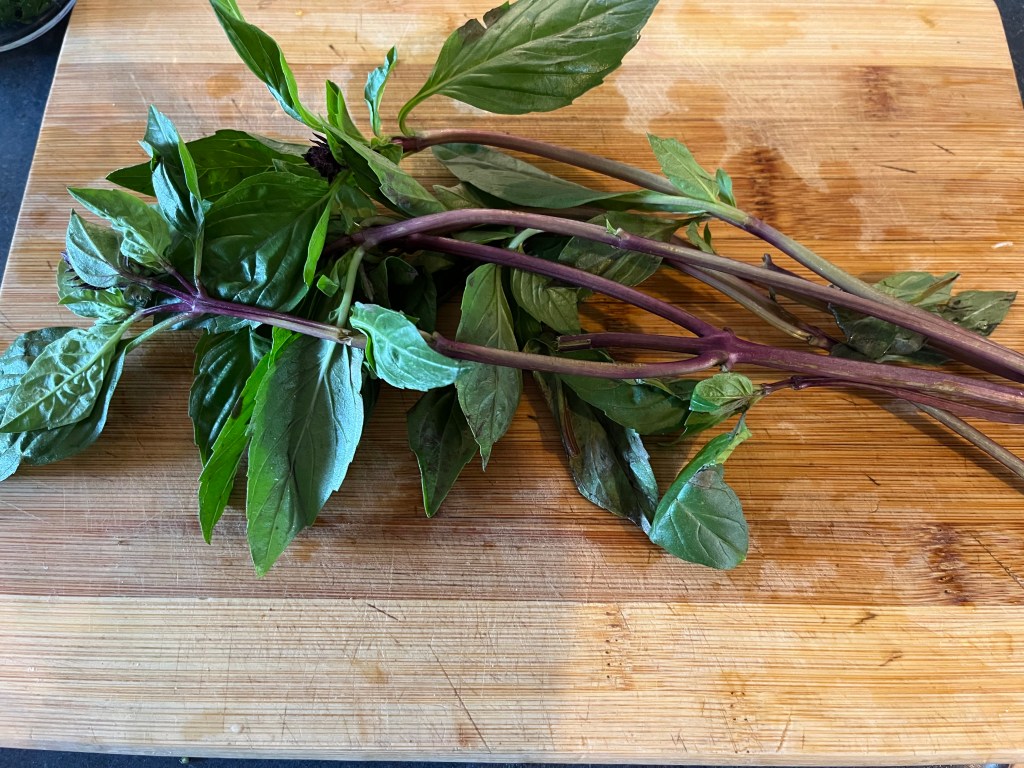
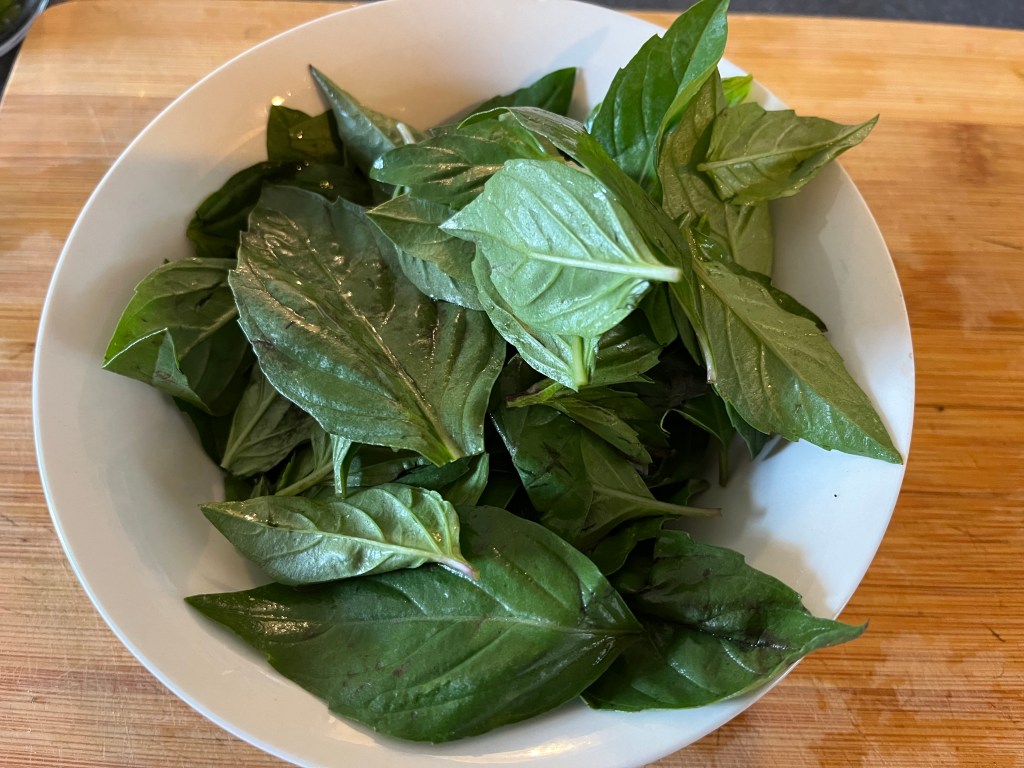
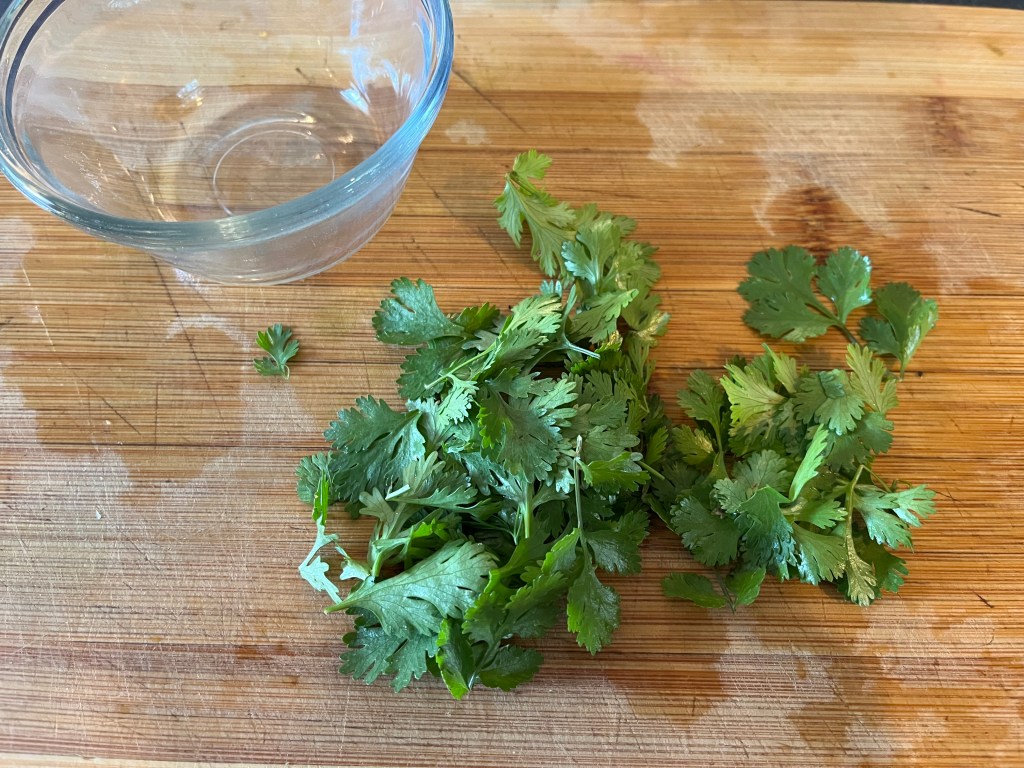
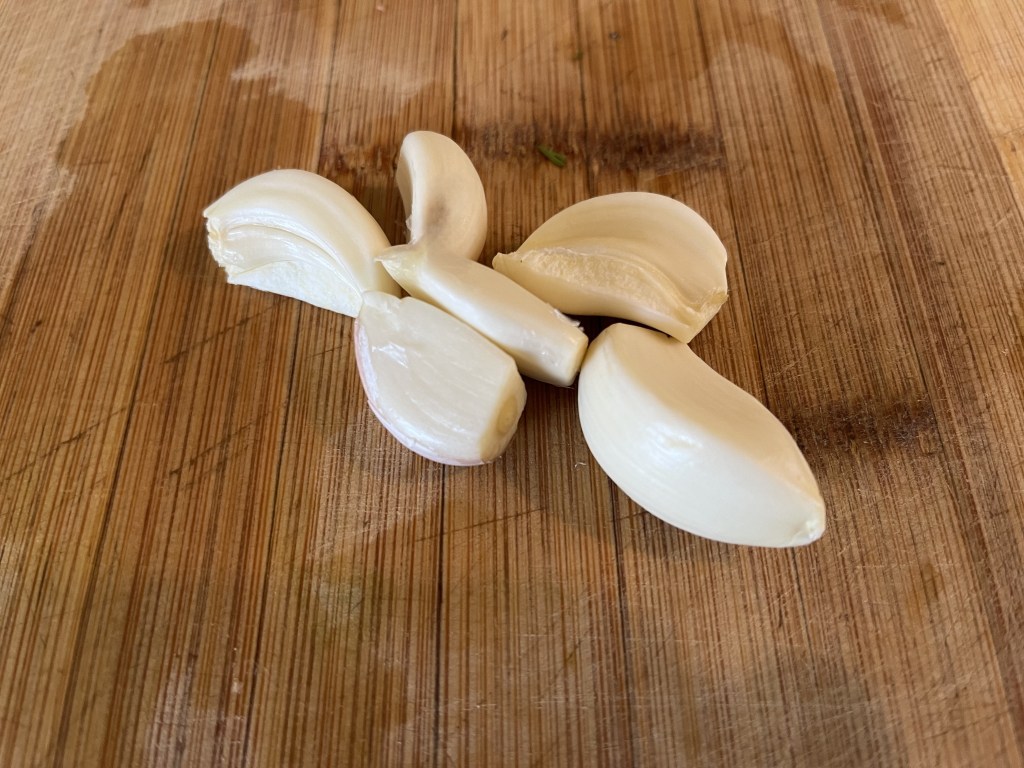

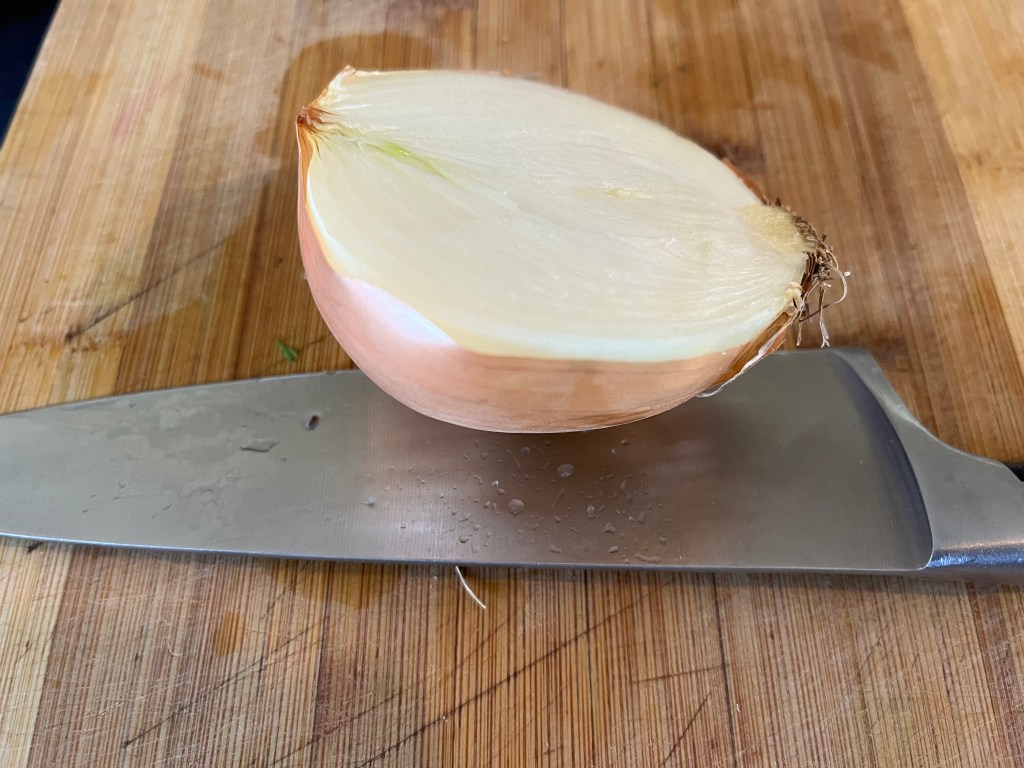



I followed the instructions on the package of noodles and soaked them in cold water for 20 to 30 minutes. I pulled the noodles out and heated the water to a boil and added the noodles back in for about 10 minutes, until they just became tender. I set the noodles aside.


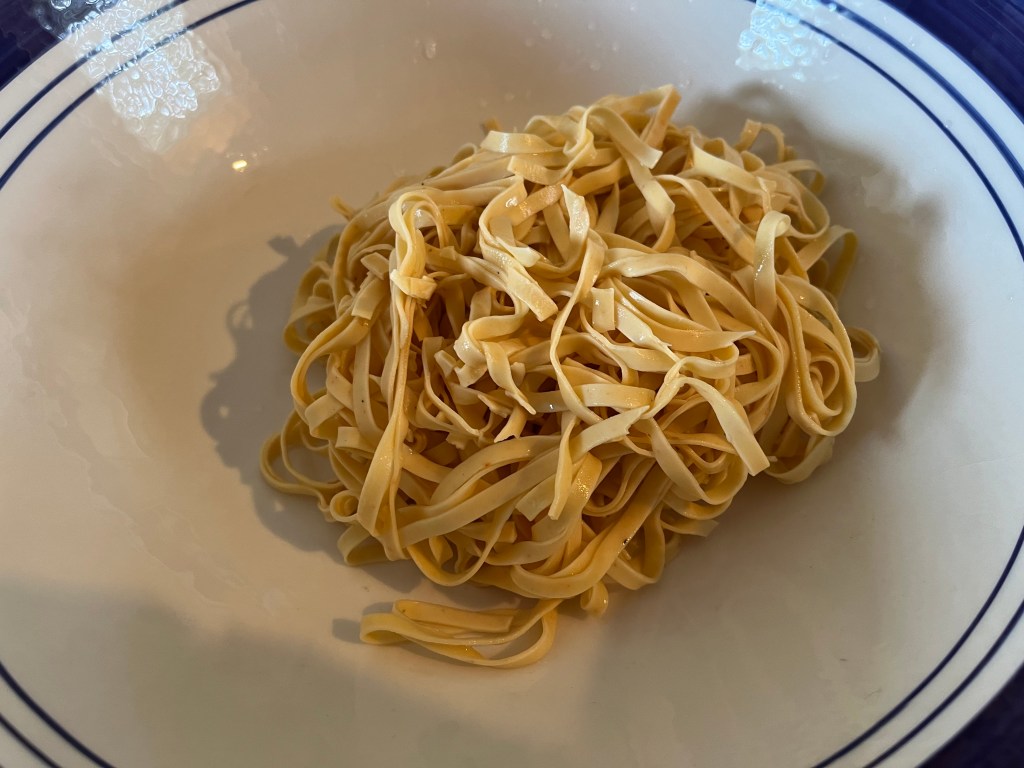


While the noodles were soaking, I cut chicken breast meat into bite sized pieces and added them to a mixture of flour and cornstarch (about 4 to 1 ratio, flour to cornstarch). I tossed the chicken pieces until they were fully coated.
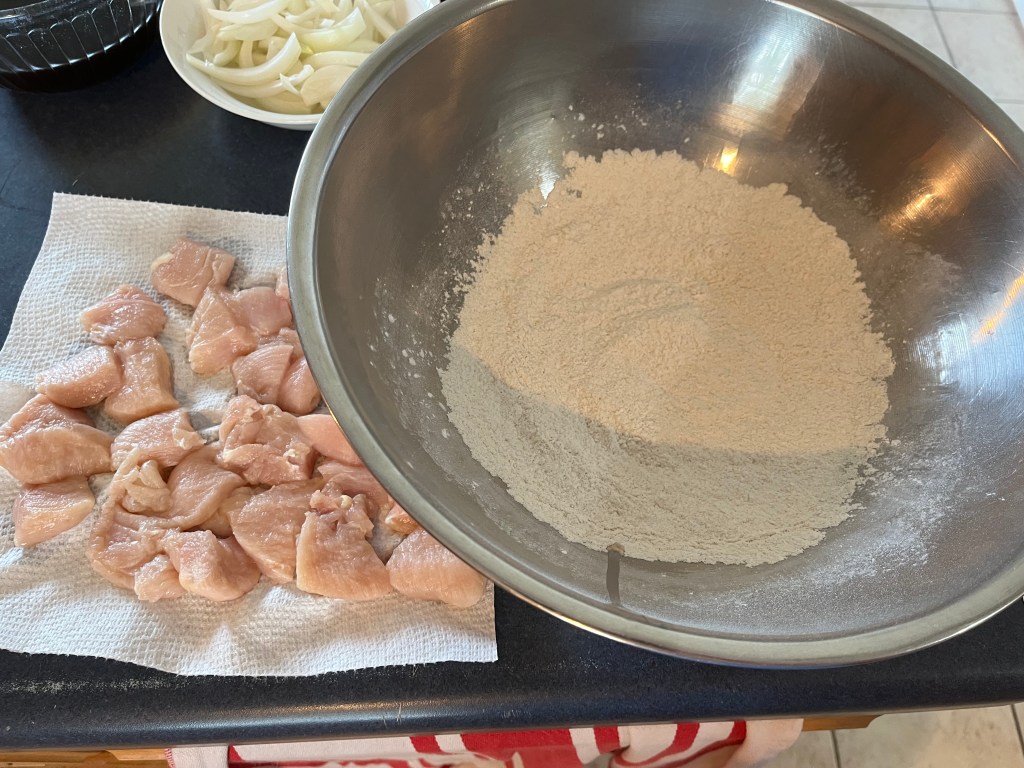

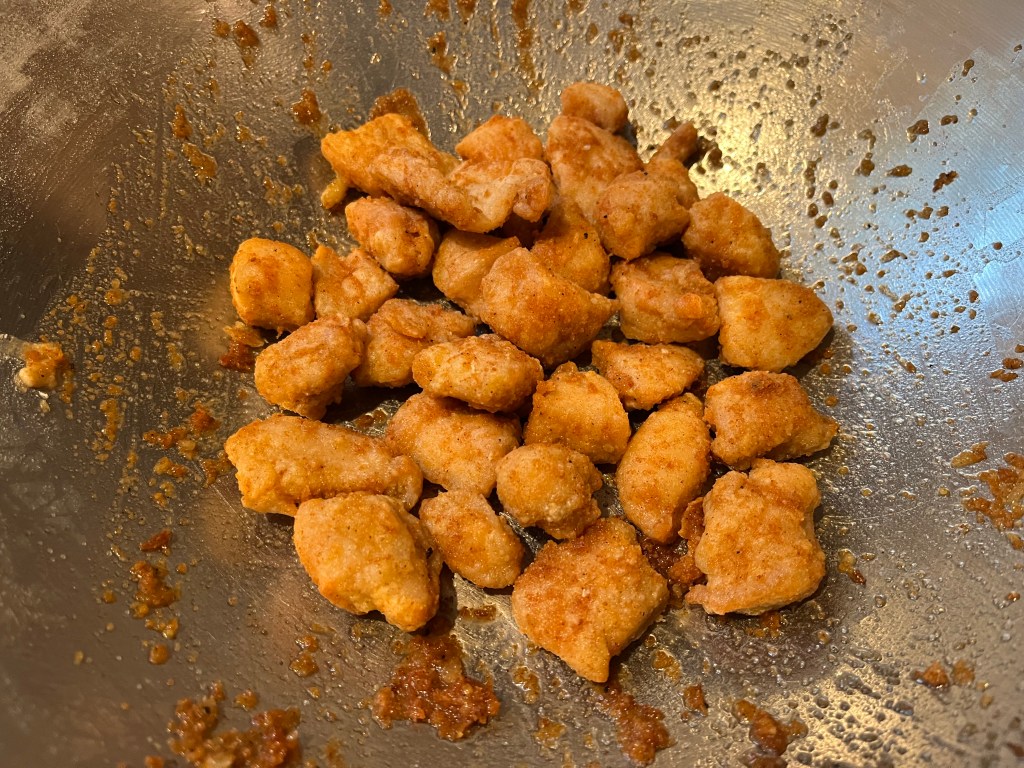
I double-fried the chicken in the wok, which is to say, I fried the chicken and then pulled it out for a minute and then put it back into the wok to finish with a crisp fry. I set the chicken aside and removed all but about 2 tablespoons of oil.
Now that the noodles and chicken were ready, I heated the wok and I added the julienned onions and stirred for a minute, then I added the mashed garlic and stirred another minute, and finally add the Thai chilies. After a minute more of stirring I removed the onion, garlic, and chilies and set aside.
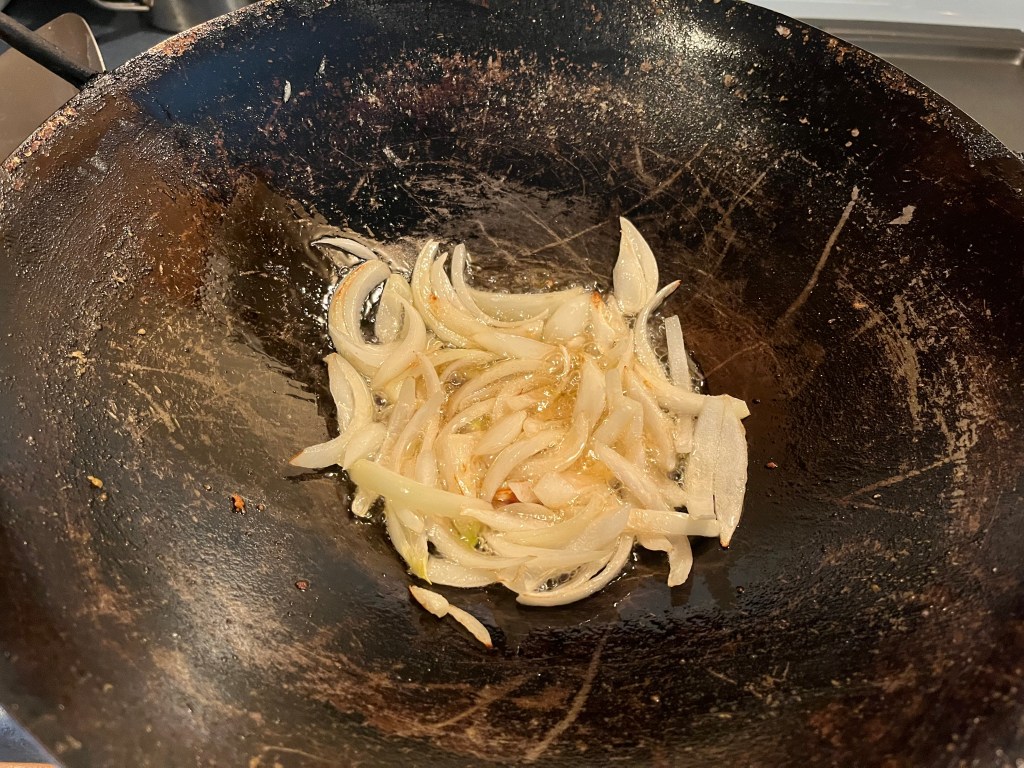
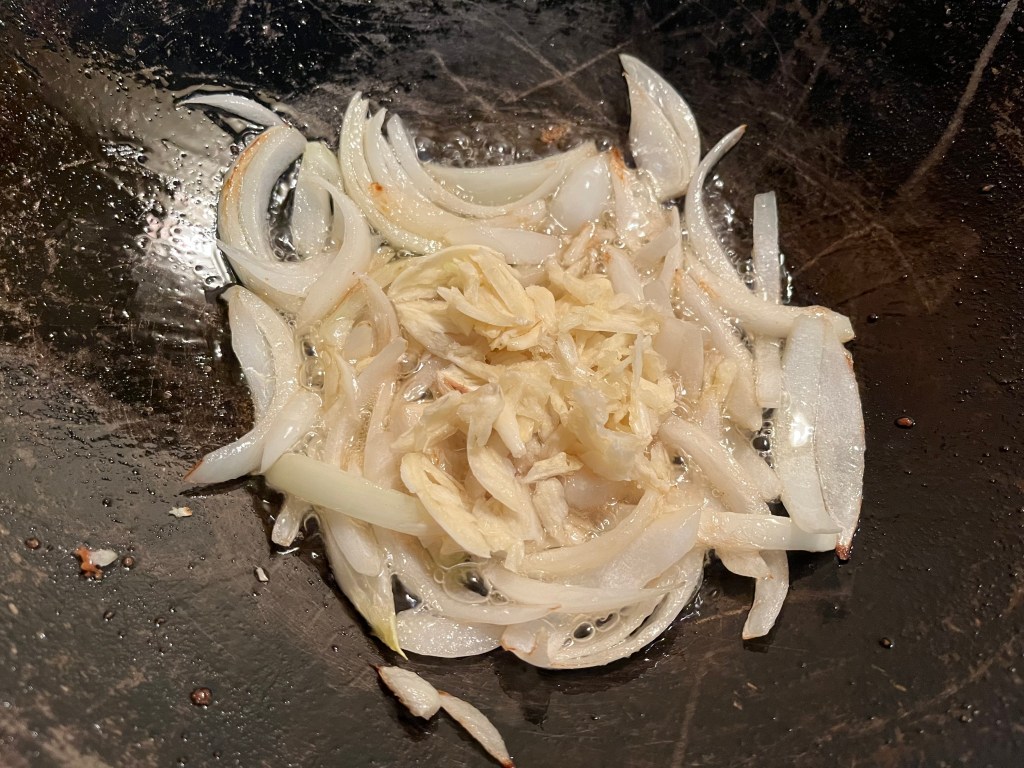
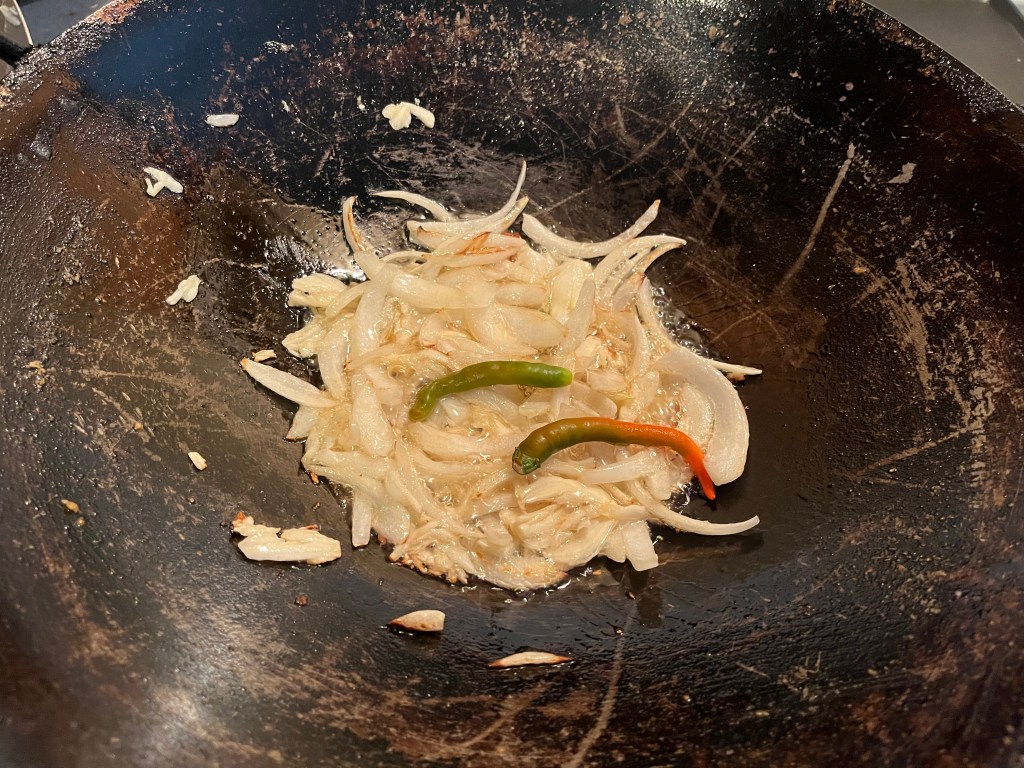
I prepared a sauce by combining chicken stock, dark soy sauce, soy sauce, oyster sauce, sugar, and vinegar. As I mentioned previously, I estimated the amounts, but this is probably close…
1 cup chicken stock
2 Tbs. dark soy sauce
2 Tbs. soy sauce
2 Tbs. oyster sauce
1 tsp. sugar
1 tsp white vinegar
I added the prepared sauce and simmered it at medium heat for a minute and then added the cooked noodles and swirled them in the wok for a minute so that the noodles could absorb some of the sauce, and then I removed the noodles and set them aside.
I pulled out a bit of the sauce from the wok and added some cornstarch to make a slurry. I added the slurry back into the work and whisked for a minute, until the sauce thickened a little.

I added the enoki mushrooms and simmered for a minute.

I added the Thai basil and cilantro and turned the heat off. The basil should wilt, not cook.
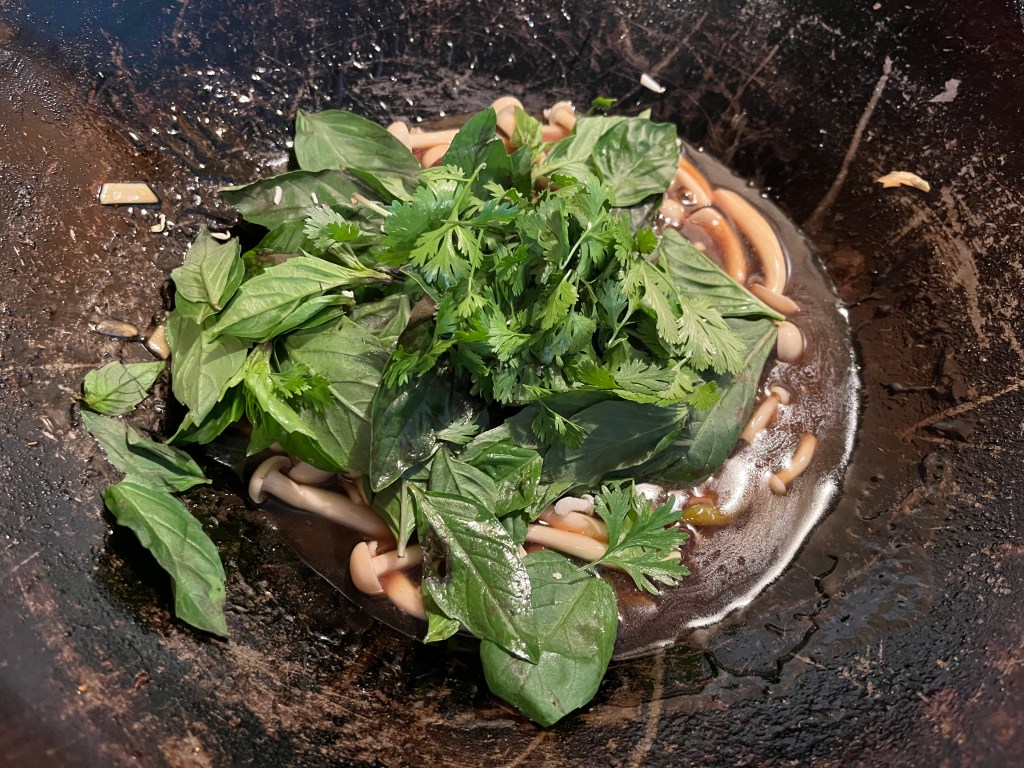
I added the noodles to a serving bowl and topped it with the cooked chicken. I poured the contents of wok over the serving bowl and dinner was served.
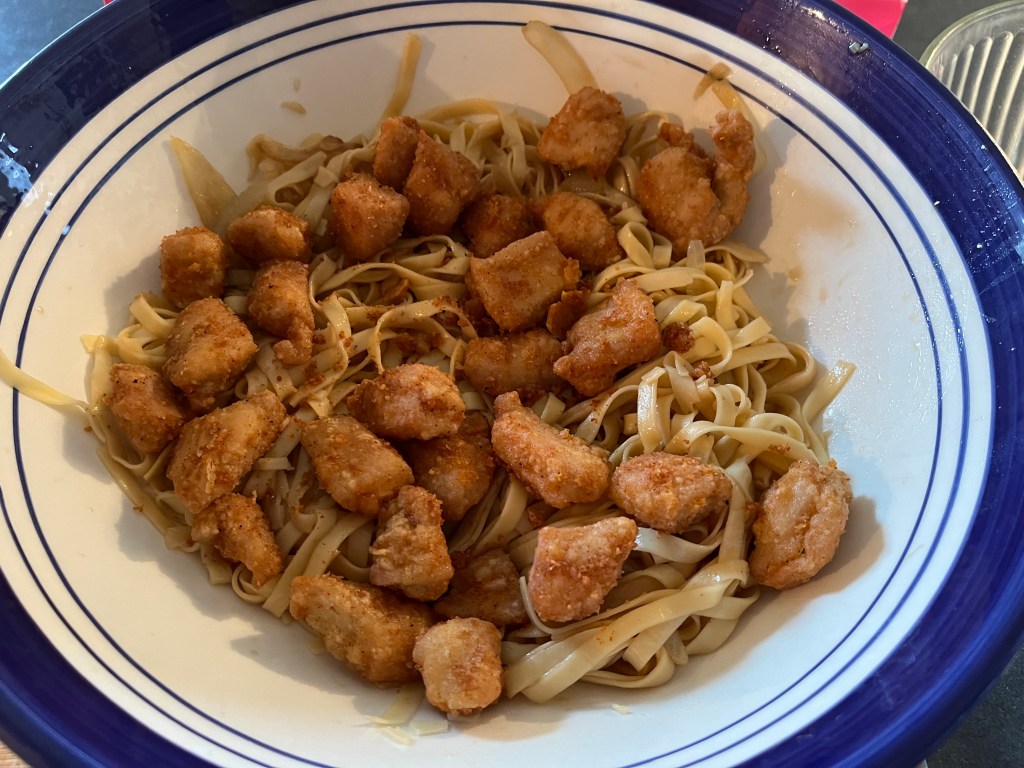

The whole process took about 3 hours, but I was taking my time and having fun. This could have been accomplished in less than two hours, including prep time and cooking time.
I have to say that I wanted more Thai basil. The sauce was delicious, full of umami flavor, but the Thai basil played a supporting role, and I really wanted it to be more prominent. Next time I will add more basil!


















